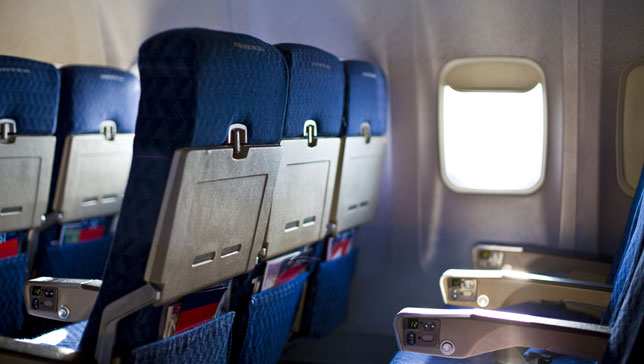Concerned about germs while traveling by plane? It turns out that your seat-back pocket might actually be germier than the toilet handle, according to a new study, which also suggests that certain bacteria can linger on surfaces within airplanes for longer than a week.
In the study, researchers found that the antibiotic-resistant bacterium known as MRSA (Methicillin-resistant Staphylococcus aureus) lived on material from a seat-back pocket for a week, which is longer than it lived on any other surface found in airplanes. It actually lasted for the shortest amount of time on the toilet handle.
How Tiny Bugs Can Slow Down An Airplane
We’ve all had insects smash into our windshield when driving. Gross, yes, but it’s not a major problem. But for the airlines … it is!
The bacterium E. coli O157:H7, a common culprit in outbreaks of foodborne illness, survived longest on the material from the armrest, living there for four days.
“We do not know how likely it is for a passenger to get infected, but the odds are higher when groups of people are put into a crowded room or cabin,” said James M. Barbaree, an associate director for research at Auburn University in Alabama. [6 Superbugs to Watch Out For]
“Good hygiene practices lower the risk” of getting sick, Barbaree told Live Science.
The bacteria the researchers looked at are common in the environment, and people may be exposed to them and not even get sick. However, E. coli O157:H7 may cause severe diarrhea, and can even lead to hemolytic-uremic syndrome, a disorder that destroys blood cells and can be fatal, especially in children younger than age 5 and older adults. Infection with MRSA can cause skin diseases and pneumonia.
In the study, the researchers tested how long MRSA and E. coli bacteria could survive in an aircraft cabin while exposed to typical airplane conditions that included human sweat and saliva. The researchers tested the bacteria’s “survival skills” on six surfaces they obtained from a major airline carrier: an armrest, a plastic tray table, a metal toilet handle, a window shade, a seat pocket cloth and seat leather.
The reason certain types of bacteria survived longer on plane surfaces may be related to their differing structures, the researchers said.
Source: Discovery news


